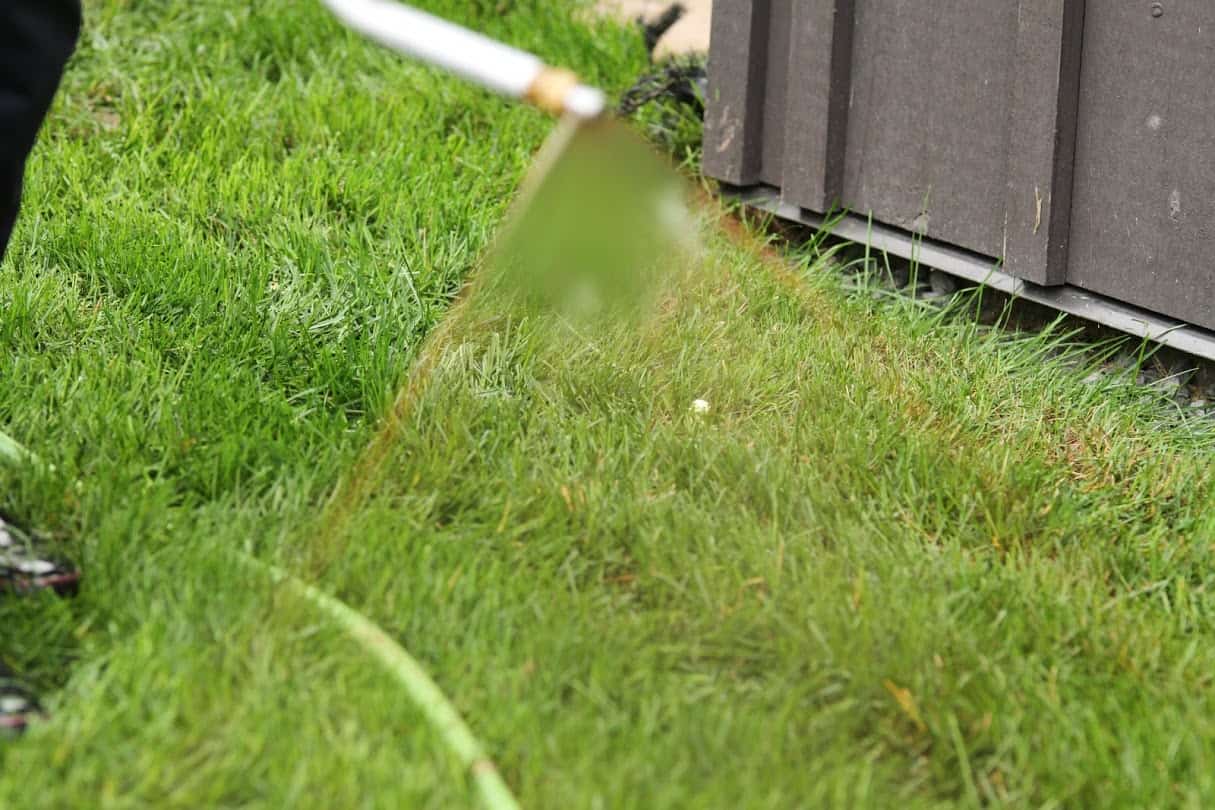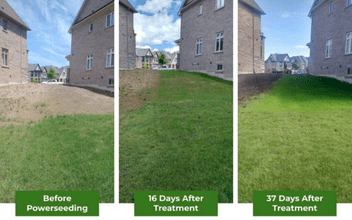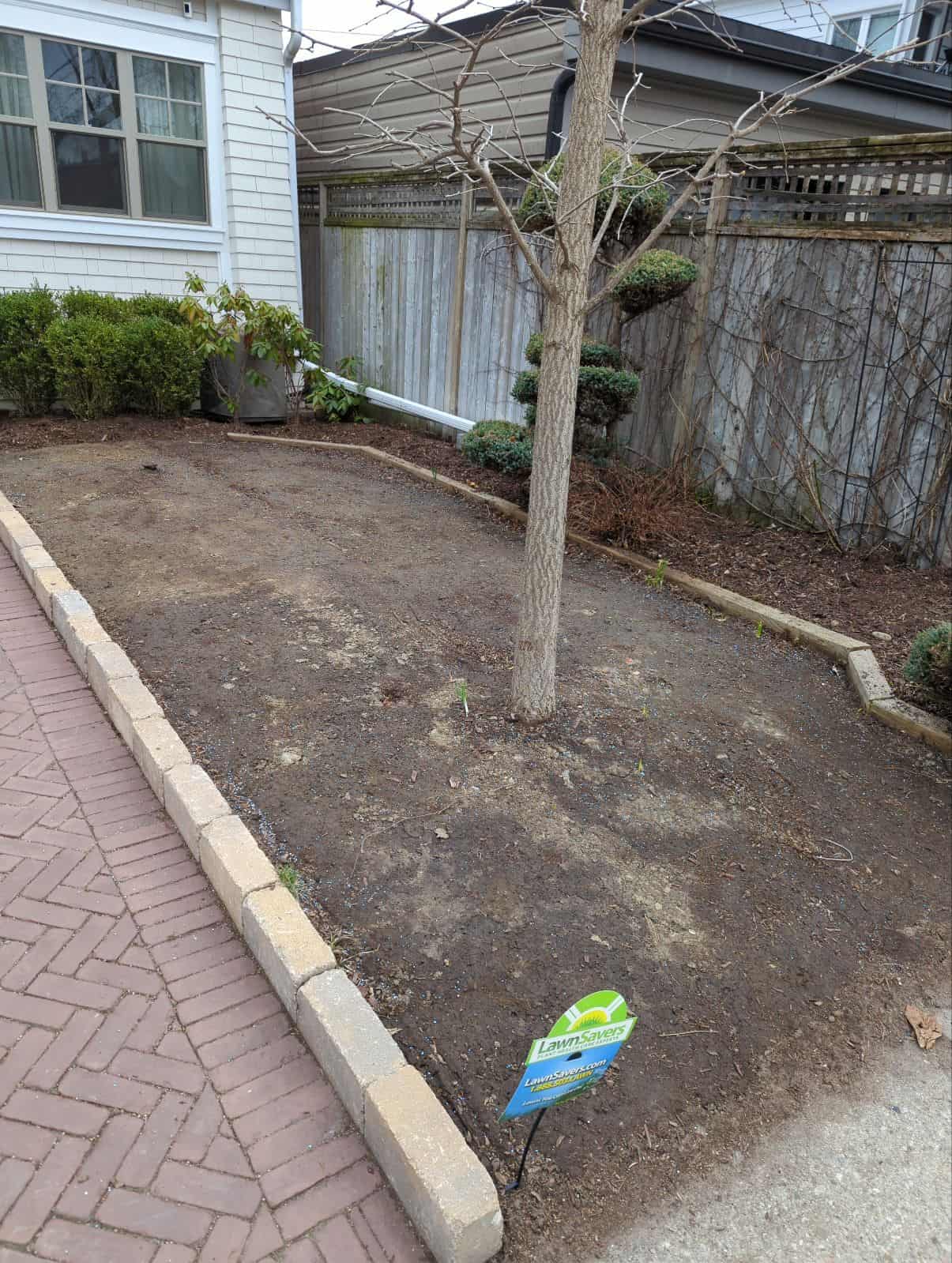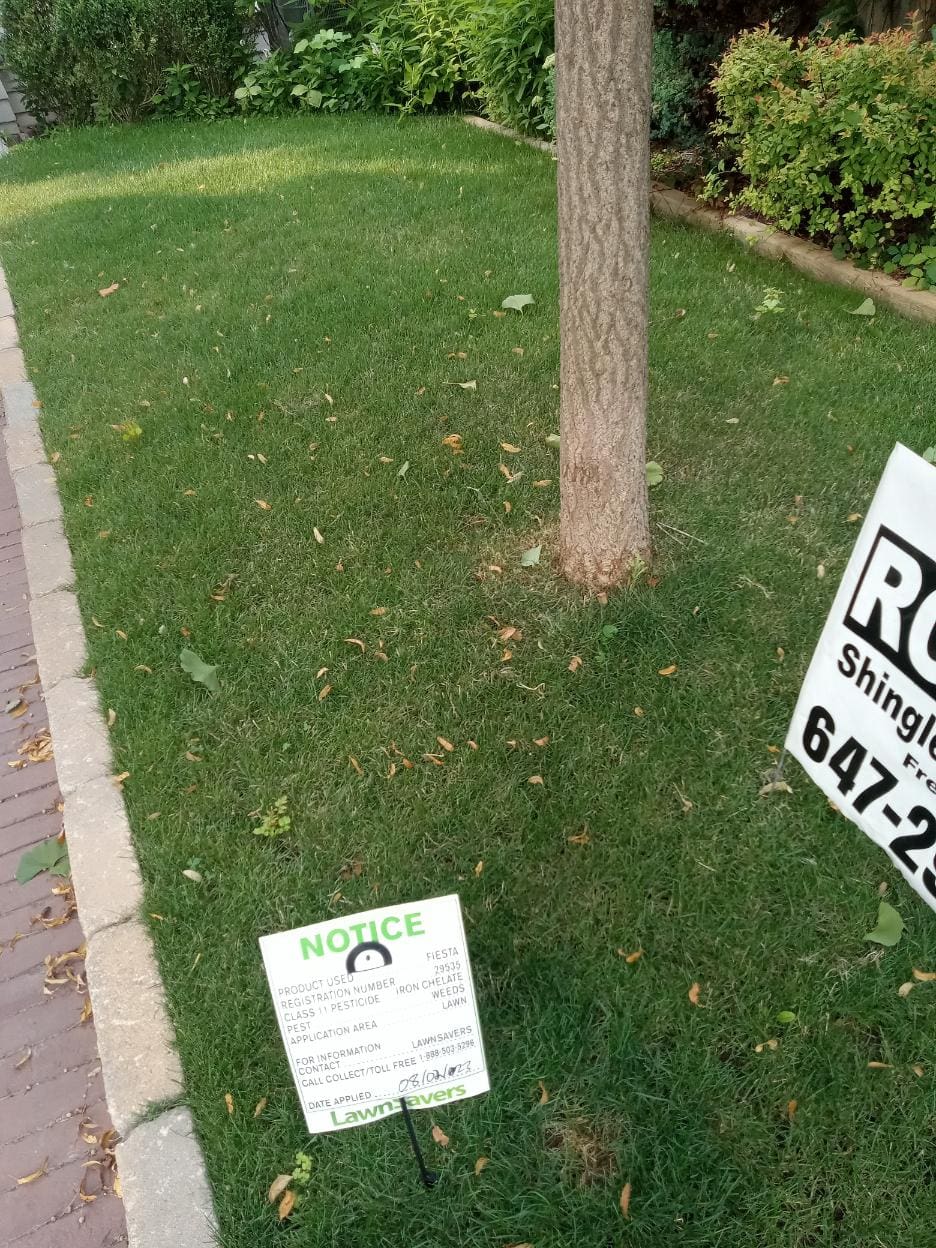Lawn Aeration
BEST Lawn Aeration Toronto
What is Liquid Aeration, Core Aeration, or Aerification?
Technically speaking, aeration is the naturally occurring process of air exchange between the soil and its surrounding atmosphere. Practically speaking, Liquid Aeration is the process of either applying a blend of soil enhancing materials instead of mechanically removing small plugs of thatch and soil from the lawn to improve soil aeration. The aeration process histroically was only done through core aeration in the lawn service industry, but there is a better option, and it helps reduce weed seed proliferation!
The newest development in lawn technology and used by LawnSavers is “Liquid Aeration” using a proprietary blend of beneficial ingredients to aerate and improve soil structure without creating additional holes for weeds to flourish. We call this our exclusive ‘NO-MESS Liquid Aeration’ treatment and it’s offered exclusively as part of our Protector lawn care program!
These ingredients are all naturally occuring and organic base products like soap bases, humic and fulvic acids, kelp , molasses etc. that boost and enhance soils natural properties for healthier soil.
What are the Benefits of Liquid Aeration For Your Lawn in Ontario?
There are many lawn aeration benefits making the price to aerate and seed your lawn quite worth it. It helps to improve the lawn’s health and vigor and it reduces maintenance requirements, which is especially helpful in Ontario’s ever-changing weather. The following are other benefits of liquid aeration:
- Improved air exchange between the soil and atmosphere.
- Enhanced soil water uptake.
- Improved fertilizer uptake and use.
- Reduced water runoff and puddling.
- Improved turfgrass rooting.
- Reduced soil compaction.
- Enhanced heat and drought stress tolerance.
- Improved resiliency and cushioning.
- Enhanced thatch breakdown.
- Liquid aeration adds essential carbon that builds life-supporting soil where it doesn’t exist in good supply. (like clay or sandy soils)
Aeration Equipment
The type of aeration equipment or method of application used influences the benefits obtained from aeration. Equipment with hollow tines removes soil cores. Aeration equipment varies in tine size up to ¾ inch and in-depth of penetration up to 3 inches,
The penetration depth depends on soil type, soil moisture, tine diameter, and the weight and power of the aerator. Penetration is better in moist soils than dry soils and will differ from lawn to lawn. the main problem associated with using Core Aeration instead of Liquid Aeration is that it leaves an ideal spot for weed seeds to grow. It can also puncture shallow sprinkler pipes or cut wires. Many simply don’t like the mess! That’s why we offer Our No-Mess Liquid Aeration
Liquid Aeration Before and After in Toronto
Liquid Aeration promotes aeration and soil building through a chemical change at the soil particle level to reduce compaction and improve the flow and mobility of water and nutrients in the soil. It also reduces the chance for new weed seed germination and is safe for all properties (like those with shallow sprinkler system pipes or wires).
The core ingredients contained in our Liquid Aeration are have been shown to improve the soil’s physical characteristics and properties. This assists in increasing rootzone oxygen levels and allows for deeper penetration of water. Not only does this improved soil porosity encourage deeper roots, it leads to a healthier soil under your lawn.
The added carbon content in LawnSavers Liquid Aeration will further boost beneficial soil microbes which can help reduce thatch, improve nutrient and water uptake, and ultimately improve the plants abilities to withstand environmental stresses.
Why is Lawn Aeration Necessary in Toronto?
In most Ontario home lawns, the natural soil has been seriously disturbed by the building process. Fertile topsoil may have been removed or buried during excavation of the basement or footings, leaving subsoil that is more compact, higher in clay content and less desirable for healthy lawn growth. These lawns need aeration to improve the depth and extent of turfgrass rooting and to improve fertilizer and water use.
Intensively used lawns are exposed to stress from traffic injury. Walking, playing and mowing are forms of traffic that compact soil and stress lawns. Raindrops and irrigation increase soil density by compacting soil particles and reducing large air spaces where roots may readily grow.
Aeration, especially liquid aeration, helps heavily used lawns and lawns growing on compacted soils by improving the depth and extent of turfgrass rooting, allowing better water uptake, enhancing fertilizer use and speeding up thatch breakdown.
Ontario has a wide range of soil types depending on the region. Thatch accumulates faster on compacted soils, heavy clay soils, and subsoils that are disturbed during building processes than on well-aerated soils. Therefore, lawns in Ontario require frequent aeration to prevent thatch buildup. Most home lawns growing on heavy clay or highly compacted soils require annual liquid aeration to restrict thatch accumulation which is why it is important to know when to aerate your lawn.
Lawn Aeration Before And After Results
When to Aerate Your Lawn in Ontario?
Annual aeration is beneficial for most lawns in Ontario. The University of Guelph Turfgrass Institute recommends aeration be done in either Spring or Fall at least once per year. Lawns growing on heavy clay or subsoils, and lawns exposed to intense use benefit from more than one aeration each year. Most turf grasses respond favorably to aeration and liquid aeration can be done at any time during the growing season.
Both Ontario’s spring and fall seasons are ideal times to aerate cool-season turfgrass such as Kentucky bluegrass and perennial ryegrass. In most cases, spring aeration is performed between March and May. Fall aeration is done in late summer and early fall, usually between mid-August and late November. Aeration before or at the time of late-season fertilization enhances root growth responses and improves spring green-up and growth.
Although aeration is beneficial for lawns, it also can open up spaces for weeds such as crabgrass and annual bluegrass to invade the lawn. It is best to aerate and seed before you apply pre-emergent seed inhibitors like Corn Gluten. If you wish to seed and utilize corn gluten, you should wait until the fall for aeration and seeding once any crabgrass has passed its chance to germinate. Regular Liquid Aeration and Slow Release Granular fertilizer helps the lawn compete against weeds. Water the lawn after aeration, particularly in areas where drought and high temperatures are common.
What Can you Expect After Lawn Aeration?
 If you are receiving Liquid Aeration , We only ask that you water as soon as possible. You will see a slight green up within days because their is some nitrogen and other nutrients that promote greening of plants, but otherwise the results take time to build in the soil.
If you are receiving Liquid Aeration , We only ask that you water as soon as possible. You will see a slight green up within days because their is some nitrogen and other nutrients that promote greening of plants, but otherwise the results take time to build in the soil.
If you are receiving core aeration, Immediately after the service, your lawn will be dotted with small plugs pulled from the soil. Within a week or two, these plugs of thatch and soil break apart and disappear into the lawn. Many customers don’t like the cores; another reason to choose Liquid Aeration.
About 7 to 10 days after aeration, the aerification holes will be filled with white, actively growing roots. These roots are a sign that the turfgrass is responding to the additional oxygen, moisture, and nutrients in the soil from the aeration process.
On compacted soils and on lawns with slopes, you should see a slight difference in water puddling and runoff after irrigation or rainfall. After aeration, your lawn should be able to go longer between watering’s, without showing signs of wilt. With repeat aeration’s over time, your lawn will show enhanced heat and drought stress tolerance.
Don’t expect miracles from a single aeration of either type. particularly on lawns growing on extremely poor soils. Most lawns in Ontario benefit from annual aeration and is offered exclusively as part of LawnSavers Protector Package. Lawns that receive this care will be healthier, more vigorous, easier to maintain, and have fewer pest problems than lawns that are neglected.
How Much Does It Cost to Aerate Your Lawn In Ontario?
- Liquid lawn aeration is exclusively offered as part of our Protector Lawn Care Package to see our lawn aeration prices please check out our package information.
Process
- The Liquid aeration process is a spray that is watered into the soil to activate its many beneficial properties. The mechanical process utilizes small tines that remove thousands of cores form your entire lawn.
Here’s what Ron said on Google:
“Used LawnSavers for many years now. Very reliable, reasonably priced, responsive to any concerns I might have, and the lawn continues to look terrific! Recommend them highly !”
Rating: 5/5 ⭐⭐⭐⭐⭐










